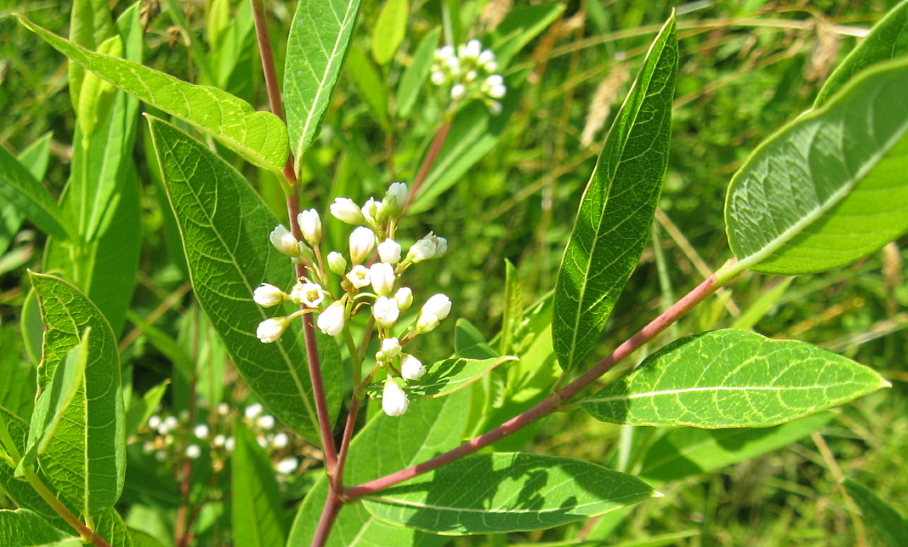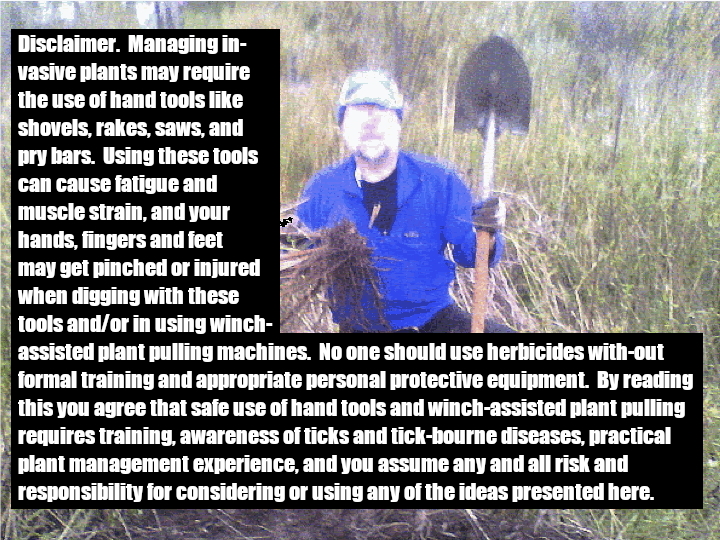
The Plant
As you no doubt know, MF Rose (Rosa multiflora) is from Eastern China, but has been in the US for over 200 years. Notorious for sharp, hard thorns that cut more than they scratch, MF Rose is a large shrub, and a single plant can grow to 15 feet high and almost as wide. Trouble is, MF Rose grows in large, impenetrable thickets that can quickly take over a landscape, beating out native plants.

Older stems have brown, sometimes flaky bark, and the thorns get bigger. These thorns cut!
A little research on this plant and you soon learn it is a huge problem in the Eastern US, introduced in many states as a promising tool for combating erosion and as a living fence. It did not work out that way because MF rose has evolved powerful means of reproduction, and once it is established it is tough to eradicate. Songbirds and deer eat the fruit, and spread the seed far and wide. Seeds last a long time in the soil (of course) so you have to keep an eye out for little ones that come up. (In hunting season I often roam the land collecting seeds . . . rifle or bow slung nearby . . . )

Hunting MF rose seed takes patience. Two handed method is to grasp the fruit stem in one hand, and gently clip it off with your sharp pruning shears with the other. Drop the fruit in a bucket, taking your time to get as many as you can.
The plant also spreads laterally, growing roots and new shoots from branches that lay along the ground.
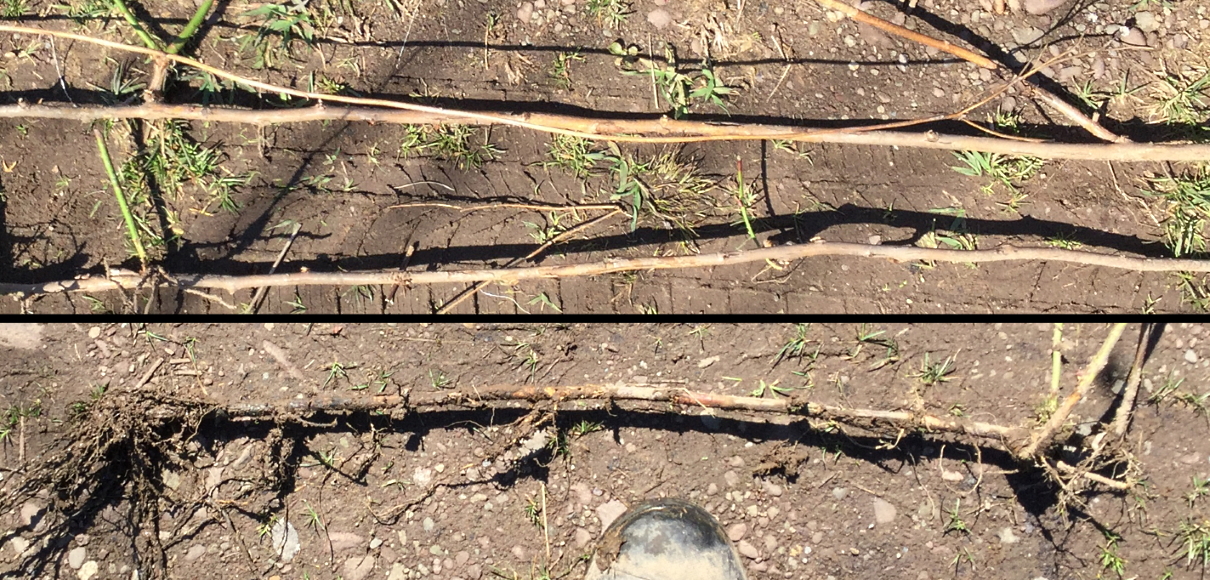
Good examples of lateral expansion stems on MF rose. Top two are branches I pulled out of the duff (litter layer) that had rooted and already sprouted new shoots. Lower one (next to my boot for scale) a lateral root creating a smaller bush nearby the primary plant.
Your Tools: Sturdy gloves, Hand tools, Heavy equipment, and Herbicides (nah).
If you click on the header images you can get a summary of what I’ll lay out here. First, you have to dig: the only sustainable way to get rid of MF rose is to dig out the whole plant, roots and all. This means your shovel is your main tool. Digging is best done in Spring and Fall, when the soil is soft. To get all the roots you have to dig pretty far, and there’s no way to get all the root when the ground is frozen or Summer-dry.
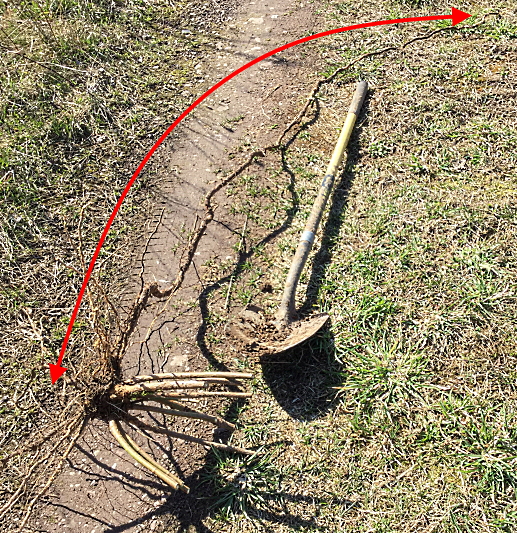
These lateral roots can go on and on! They are worth the effort when the soil is soft.
Plants lower than your belt are not that difficult to yank once you have loosened up the soil near the base of the plant. Carefully grab the base of the plant with your thick, leather-gloved hands, and pull out as much as the plant as you can pausing whenever a root takes you away from the main stem/stems. The idea is to pull the entire plant, not just some of the root, so you may need to use your shovel to cut along the root and loosen the sod as you go. It gets old pretty fast, I know. And you will soon learn that MF rose stems and roots break off the root collar very easily,

so when you decide to begin machine-assisted pulling, you have to be careful and patient where and how you attach your strap or chain.
After a few hours of this any sensible person begins thinking of a way to use machinery to push, pull, or crush into oblivion all the MF rose at your site. I have found the biggest limitation to using heavy equipment is matching the equipment to the soil in the right season. If you can get your tractor to the rose in Spring or Fall without getting it stuck, you may have a great tool to pull MF rose. On my wet clay soils I can only access the rose during the summer, and by then the soil is too hard for me to pull the plant.
In any pulling approach, once you have wrapped a strap or chain around the base of the plant’s stems – at and below the root collar – you can pull the plant out of the soil. I have had success with an electric winch powered off my truck, but it is actually a lot easier to use a come-along. Simply tie off the winch to your hitch and slowly pull the plant out of the ground. It does work, but it does take longer than you think because all the pulling force is sideways, not vertical. You spend so much time loosening the soil you end up with a very messy site.

Here I have a come-along attached to my truck’s hitch, leading to a tow strap (bought new).
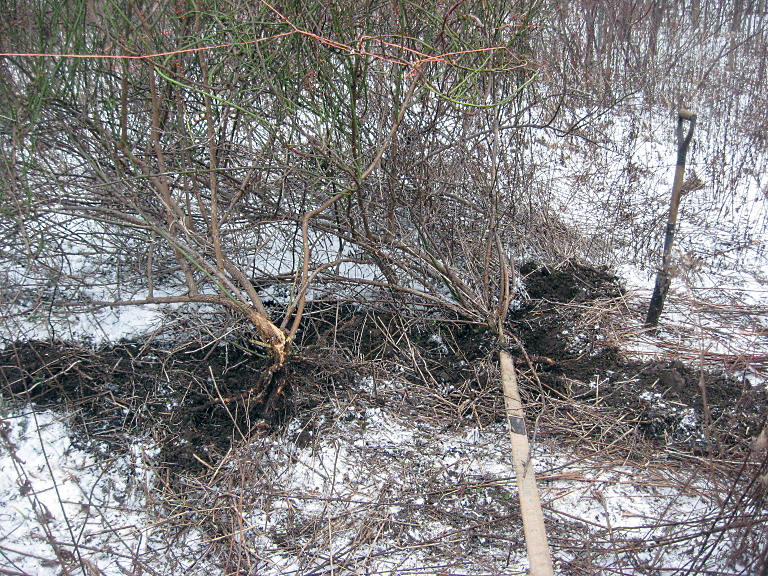
Other end of the newer tow strap connected to one I bought at a garage sale.
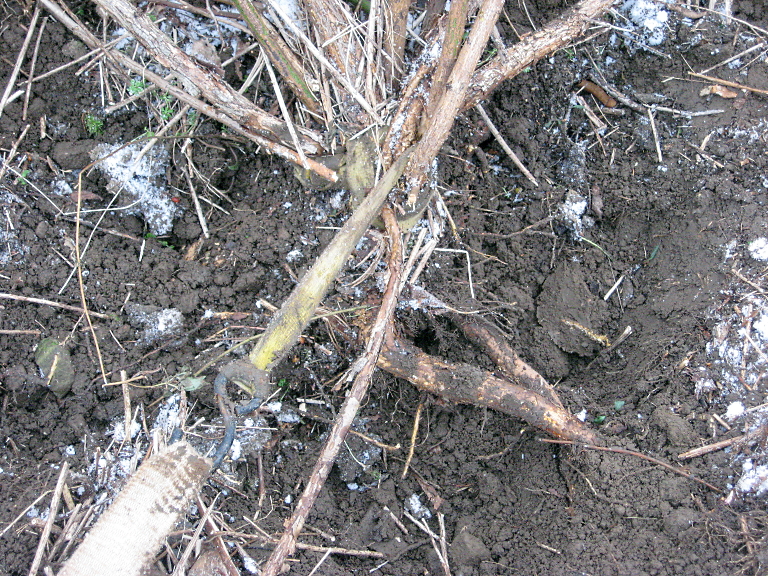
In this pic I show a 1″ strap with a looped end and an old compression strap hook to grasp the plant tightly and hook onto the pulling line.
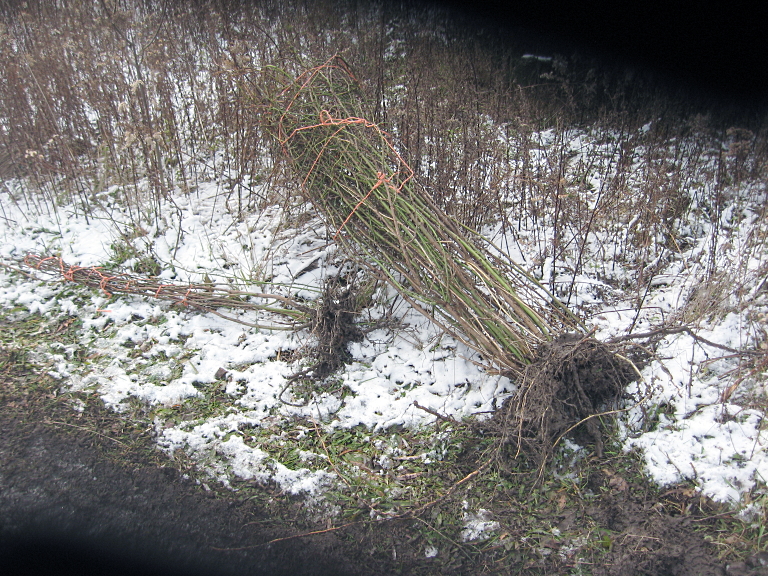
In this case I kept the stems attached to the roots while I pulled. Sometimes I cut them off the roots to allow easier access for attaching the pulling strap or chain.
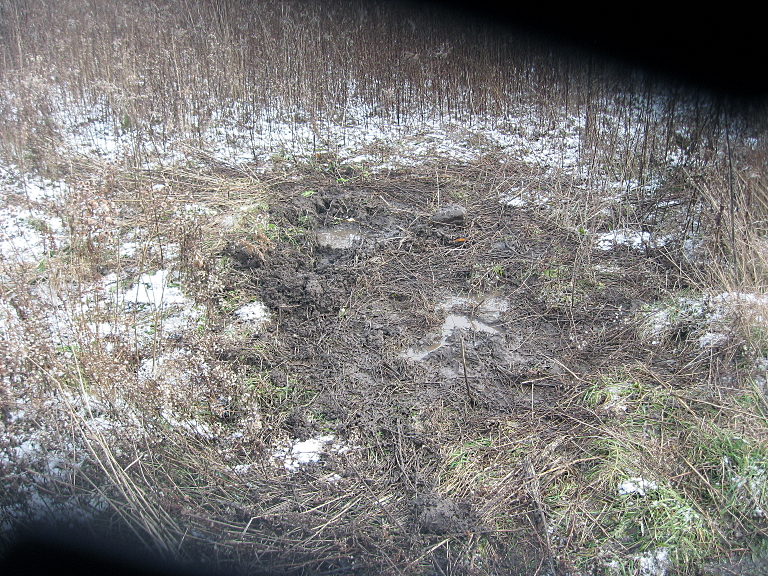
This late Fall pull was pretty messy. Part of the problem with lateral pulling is you have to spend more time loosening roots with your shovel.
You’ll notice some of the MF rose in these photos are contained with baling line. I have found that wrapping up the plant before I remove it makes accessing the stems and controlling the debris a lot easier and safer. Part of what makes MF rose such a pain is that the sharp thorns often leave behind tiny thorn tips that fester in your fingers, face, ear lobes, etc. So I don’t mind taking a few minutes to wrap up bigger plants to make the site a little more manageable.
My latest winching approach is a pulling frame I made out of a discarded lawn swing. I cut the top sections to create an arch I hold together with a chain. It is pretty light and easy to carry, and now I have a means to pull plants on wet sites, Spring and Fall. At the end of the top chain is a pulley, either a snatch block or a plain pulley assembled onto the cable. The come-along hook is attached to the strap on the plant, and the second pulley is hooked onto the plant strap or chain also. The idea is to have your horizontal pull multiplied and transformed into a vertical pull that keeps the frame on the ground as you yank the plant out of the soil.
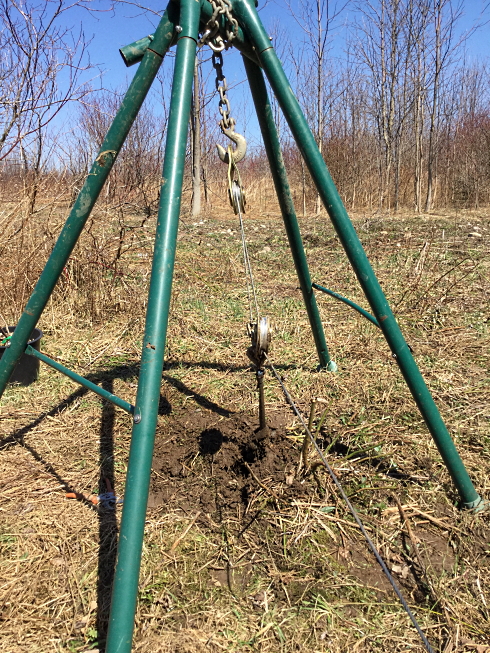
Here I am using two medium duty snatch blocks, the kind sold in outlet hardware stores for vehicle recovery. Although they allow you to work quickly, these particular blocks are fairly heavy and a little too cumbersome for this job.
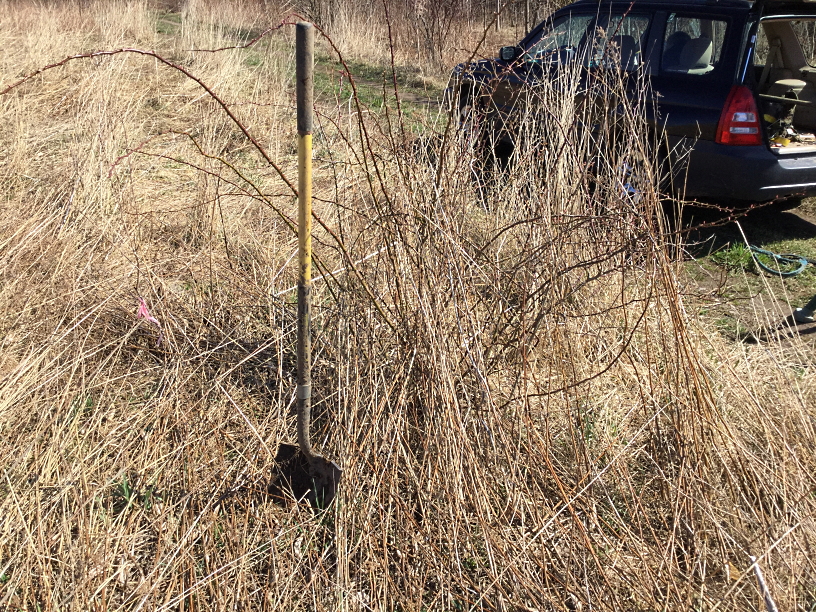
Typical late Winter, early Spring old meadow plants crowding up to this MF rose bush. Note shovel for scale indicates it is about 6′ tall, but until I grub it out I can’t tell if I need the pulling frame. (note pink flagging marking an Aronia I want to save).
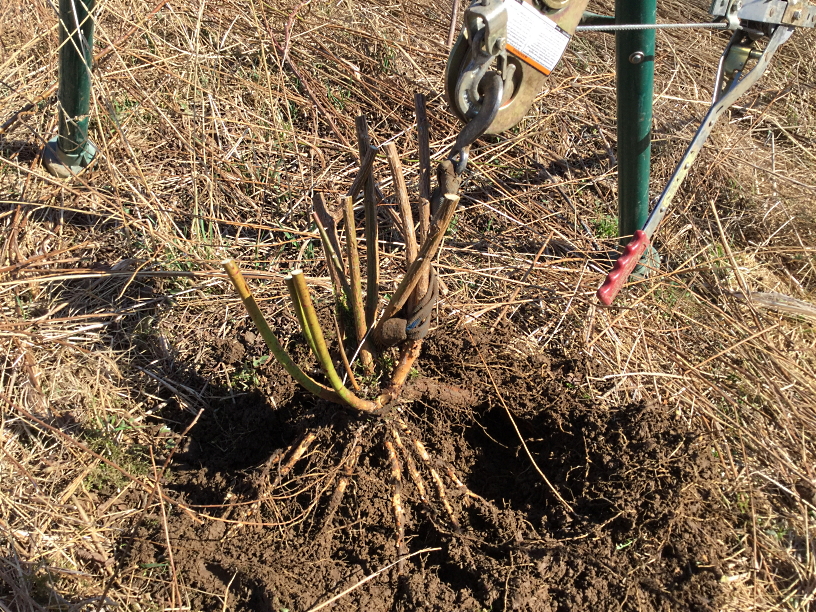
Raking out the brush and duff revealed the stems were nearly too big to easily cut with pruning shears. So a good candidate for my pulling frame. Slow and steady is the key: pull a click at a time, often taking time out for a photo op or a cup of coffee. Your patience with slow pulling will be rewarded. Note blue, 1″ tubular webbing strap attached to a nice old hook. I like strong straps that can really grab the plant.
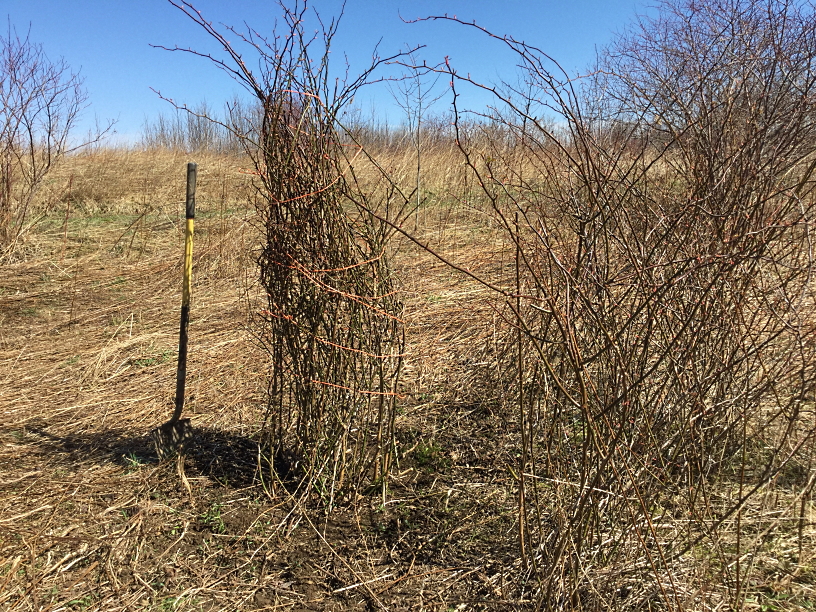
This tall MF rose bush is part of a larger thicket I had to work on one bite at a time. Wrapped the tallest one with baling line to keep the longest stems out of my way.
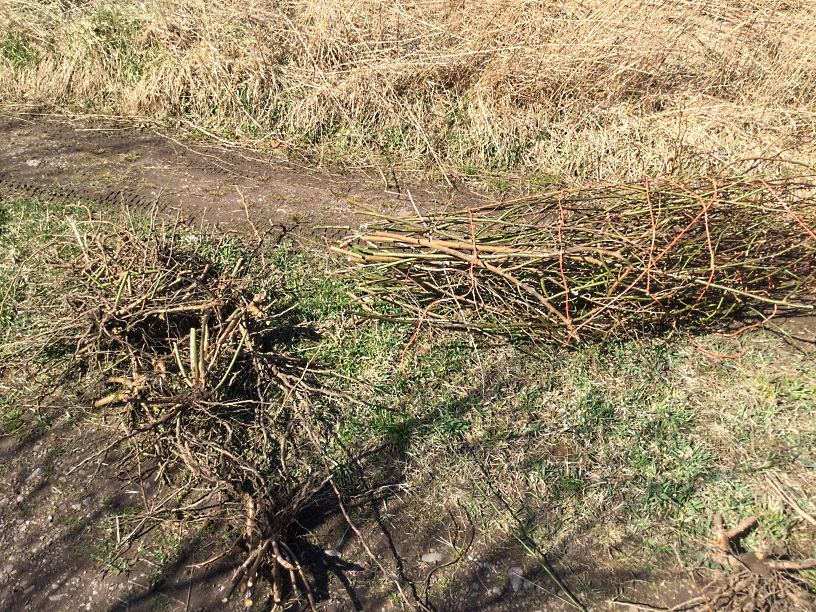
The top and all the roots from that “one” bush!
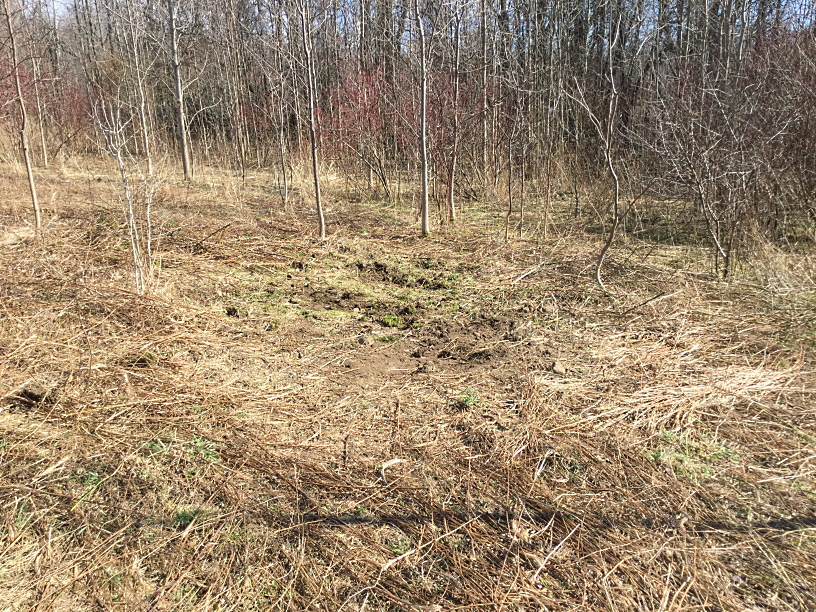
One thing I’ve discovered with this approach is that I make much less of a mess as I work. Granted this site is much drier in late Winter than late Fall, but I think pulling with the frame causes a lot less impact to the site.
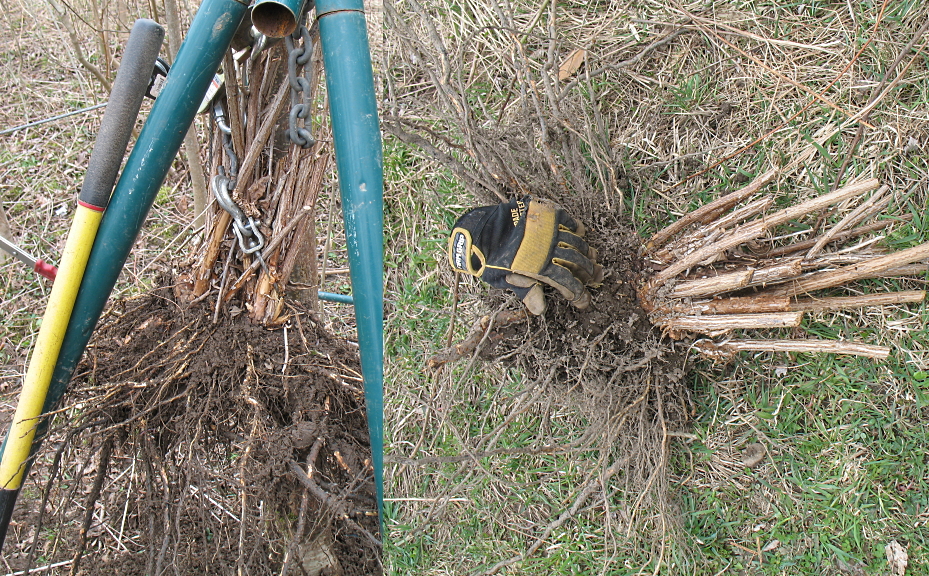
For this large bush, I wrapped the come-along cable directly around the stem. It was a nice, no-slip option.
At some point, any approach to remove MF rose will exhaust your time and energy. This is why I try to do some work on it every season. When the soil firms up at the end of Spring (usually around the time Day Lilies are done blooming) I will shift to lopping off stems with either my hand shears or long loppers. I find it helpful to starve the roots for a growing season, and make the bush easier to pull up that Fall or the following Spring. Once your meadow plants begin to leaf out it can be daunting to find the MF rose, but it is easy to spot once it blooms.
With a tractor, use your tractor’s loader or lift-linkage to pull up the plant. If you do have a loader, it can be tempting to scrape larger MF rose thickets into submission. I have not had much luck with this approach, since it disturbs so much soil in the process. If you have a back-hoe or a back-hoe attachment for your hitch and PTO set-up, you might have a great way to handle big thickets of MF rose.
I have tried herbicides, and I don’t think they work very well on MF rose. They are very expensive, and with restoration of DogWood meadows the top of my management steps, I do not like placing my native and/or introduced plants at risk. Also, I like to have growing stock ready to replace what I remove. MF rose is quite opportunistic and clever enough to succeed so well that I like to think they are showing me where something native and desirable may grow. In places where I’ve not deliberately replaced MF rose with new growing stock I have seen amazing results: in one case I have a nice new stand of Dogbane and Milkweed. In another site I now have a new stand of elderberry.
